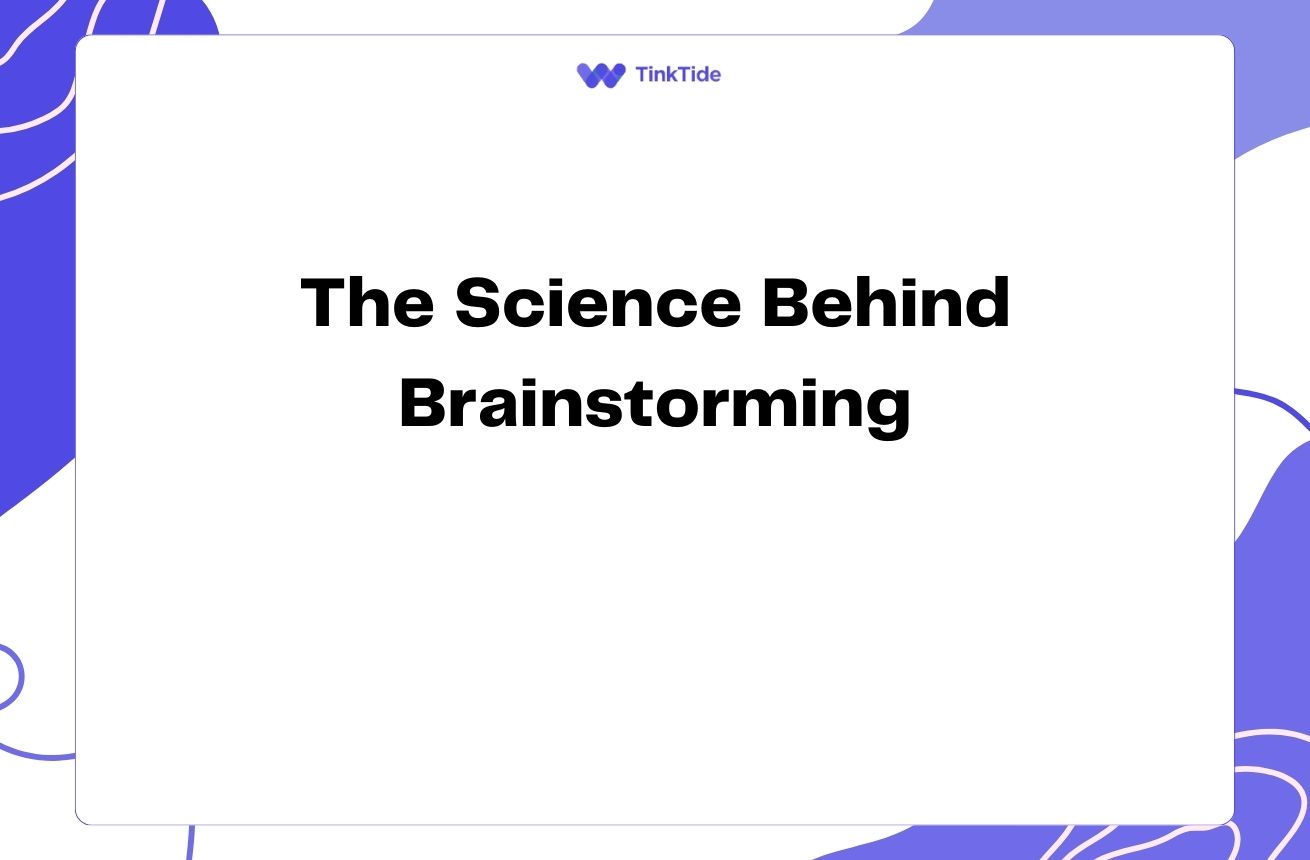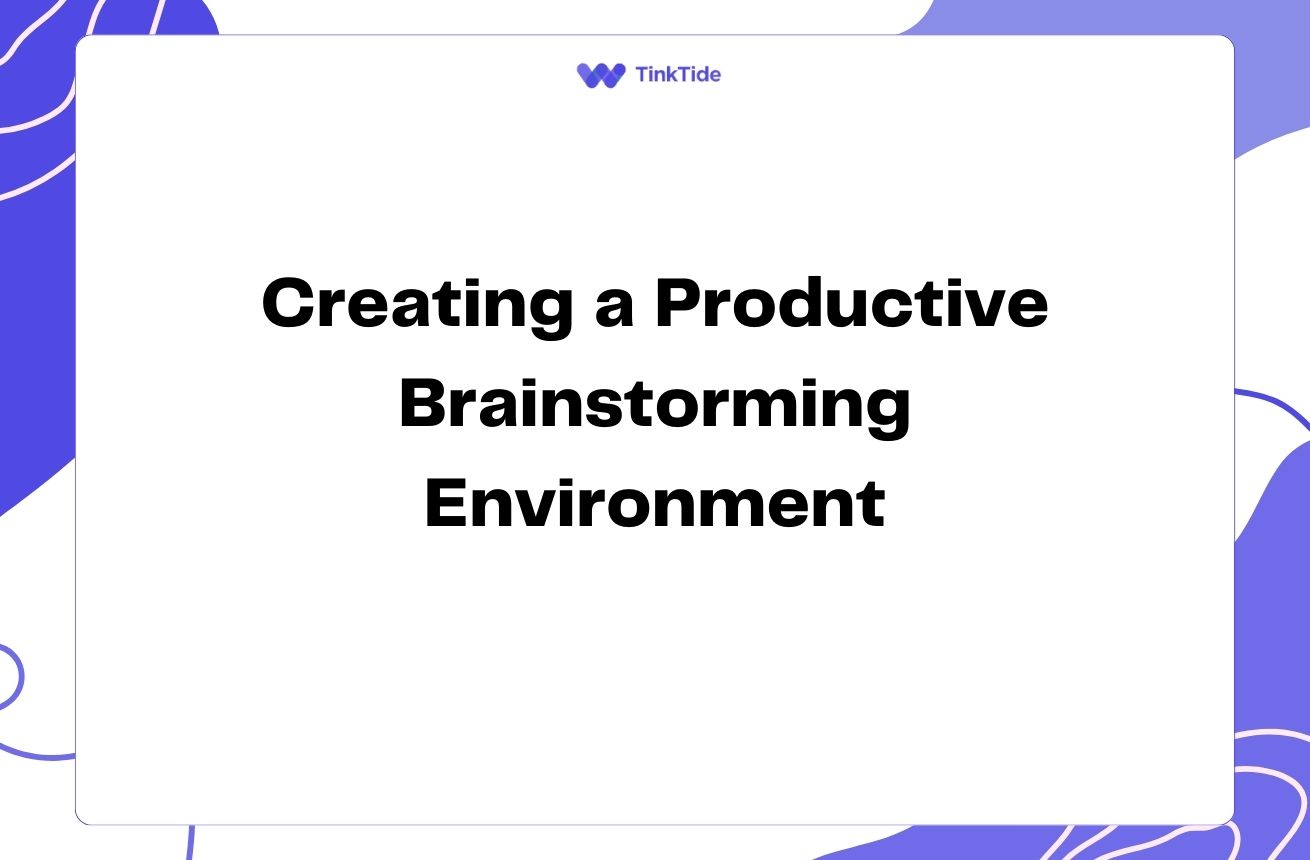Role Storming: Unleash Creativity with Fresh Perspectives
What is Role Storming?
Role storming is an innovative brainstorming technique that encourages participants to step into different roles or personas to generate ideas. This method, developed by Rick Griggs in 1985, combines elements of role-playing and traditional brainstorming to foster creativity and overcome mental blocks.
By adopting various perspectives, team members can break free from their usual thinking patterns and explore problems from new angles. This approach often leads to more diverse and innovative solutions, as it allows participants to tap into different mindsets and experiences.
Role storming is particularly effective in situations where teams feel stuck or are struggling to generate fresh ideas. It can be applied to various fields, including product design, marketing strategies, and problem-solving in complex organizational challenges.
Benefits of Role Storming
Role storming offers several advantages over traditional brainstorming methods:
- Encourages empathy and understanding of different viewpoints
- Reduces fear of judgment, as ideas are attributed to assumed roles
- Promotes creativity by breaking habitual thinking patterns
- Helps identify blind spots in problem-solving approaches
- Fosters team collaboration and communication
How to Conduct a Role Storming Session
To get the most out of role storming, follow these steps:
- Step 1: Define the problem or challenge clearly
- Step 2: Identify relevant roles or personas to adopt
- Step 3: Assign roles to participants or let them choose
- Step 4: Allow time for participants to get into character
- Step 5: Begin the brainstorming session from various perspectives
- Step 6: Encourage wild ideas and suspend judgment
- Step 7: Record all ideas generated during the session
- Step 8: Analyze and evaluate ideas after the session concludes
Choosing Effective Roles
The success of a role storming session often depends on selecting appropriate roles. Consider including:
- Industry experts or thought leaders
- Customers or end-users
- Competitors or market disruptors
- Historical figures or innovators
- Fictional characters with unique traits
For example, when brainstorming solutions for urban transportation, participants might adopt roles such as a city planner, an environmental activist, a tech entrepreneur, or even a futuristic AI traffic controller.
Overcoming Challenges in Role Storming
While role storming can be highly effective, it may present some challenges:
1. Discomfort with role-playing: Some participants might feel awkward or resistant to adopting different personas. Address this by starting with a warm-up exercise or providing clear guidelines on how to approach the roles.
2. Staying in character: Participants may struggle to maintain their assigned roles throughout the session. Encourage them to fully embrace their personas and provide prompts or questions to keep them engaged.
3. Balancing creativity and practicality: While wild ideas are encouraged, it's important to find a balance between innovative thinking and feasible solutions. Use a separate evaluation phase to assess and refine the generated ideas.
Real-world Applications of Role Storming
Role storming has been successfully applied in various industries and contexts:
1. Product Development: Companies like Apple have used role storming to anticipate user needs and design innovative products. By adopting the perspectives of different user types, teams can identify features and improvements that might otherwise be overlooked.
2. Marketing Campaigns: Advertising agencies often employ role storming to develop creative campaign ideas. By stepping into the shoes of target audience members, marketers can craft more resonant and effective messages.
3. Conflict Resolution: In organizational settings, role storming can help teams understand different stakeholders' viewpoints and find mutually beneficial solutions to conflicts.
Integrating Role Storming with Other Techniques
Role storming can be combined with other creative problem-solving methods to enhance its effectiveness:
- Mind Mapping: Use mind maps to visually organize ideas generated during role storming
- SCAMPER Technique: Apply SCAMPER questions to ideas while in different roles
- Six Thinking Hats: Combine role storming with Edward de Bono's Six Thinking Hats method
- Design Thinking: Incorporate role storming into the ideation phase of the design thinking process
Address common questions
Here are some frequently asked questions about role storming:
How is role storming different from traditional brainstorming?
Role storming adds a layer of perspective-taking to traditional brainstorming. Participants adopt different roles or personas, allowing them to approach problems from diverse viewpoints and generate more innovative ideas.
How long should a role storming session last?
A typical role storming session can last anywhere from 30 minutes to 2 hours, depending on the complexity of the problem and the number of participants. It's important to allow enough time for participants to get into character and explore ideas thoroughly.
Can role storming be done individually?
While role storming is often conducted in groups, it can also be adapted for individual use. Solo practitioners can assign themselves different roles and switch between them to generate diverse ideas and perspectives.
How many roles should be included in a role storming session?
The number of roles can vary depending on the group size and the problem at hand. Generally, 3-7 roles work well for most sessions, providing enough diversity without overwhelming participants.
Is role storming suitable for all types of problems?
Role storming is particularly effective for complex, multifaceted problems that benefit from diverse perspectives. However, it may not be the best approach for highly technical issues that require specific expertise.
How can we ensure that role storming leads to actionable ideas?
To generate actionable ideas, follow the role storming session with a structured evaluation phase. Use techniques like impact-effort matrices or weighted criteria to assess and prioritize the ideas generated during the session.
Provide additional resources
Gamestorming: A Playbook for Innovators, Rulebreakers, and Changemakers
A comprehensive guide to various creative thinking techniques, including role storming
IDEO U: Cultivating Creative Collaboration
An online course that explores innovative brainstorming methods
MindTools: Role Storming
A detailed article on the role storming technique and its applications
Harvard Business Review: Better Brainstorming
An article discussing various brainstorming techniques, including perspective-taking
Creativity at Work: Role Storming
A practical guide to implementing role storming in workplace settings
Summarize key takeaways
Role storming is a powerful technique that combines role-playing and brainstorming to generate breakthrough ideas. By adopting different perspectives, teams can overcome mental blocks, foster empathy, and explore innovative solutions to complex problems.
This method is particularly valuable in today's rapidly changing business landscape, where diverse viewpoints and creative problem-solving are essential for success. By incorporating role storming into your ideation processes, you can unlock new levels of creativity and innovation within your team.
We encourage you to try role storming in your next brainstorming session. Embrace different perspectives, challenge assumptions, and watch as fresh ideas emerge. Remember, the key to successful role storming lies in creating a safe, judgment-free environment where all ideas are welcome and explored.
Elevate Your Team's Creativity with Tinktide
Discover how Tinktide can help you implement role storming and other innovative ideation techniques in your organization.
Start Your Free Trial

